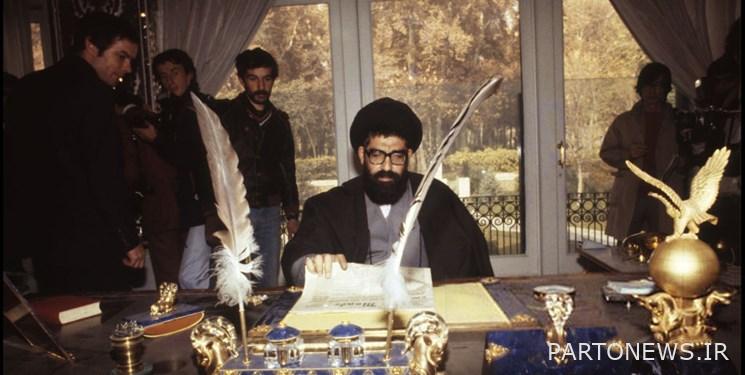Niavaran Palace in the Conquest of the Revolutionaries / Where is the King’s Golden Ship + Photo

According to the visual correspondent of Fars News Agency, سیدحسن سعادت مصطفوی He was born in 1315 in Ghaen and settled in Tehran when he was 12 years old. He, who was a scholar, attained the degree of ijtihad at the age of 29, got married and settled in Niavaran neighborhood. He was the Imam of the Niavaran Grand Mosque for many years, and this popularity and acceptance caused the revolutionary youth to occupy the Niavaran Palace, except for the leadership of Hojjatoleslam Saadat Mostafavi. It so happened that at night, the ruling of the palace was issued by the Imam and the office of the Prime Minister of Bazargan.
Mustafavi says in this regard: I was in charge of the palace for 6 years and I tried to keep the palace safe, that is why I did not let anyone in; We even wanted to go out ourselves, saying that two of our officers would patrol us so that nothing would come out of the palace. We set up a zone around the palace and coordinated with Ayatollah Mahdavi Kani that no committee could enter. The first was Kamraniyeh, the first of our border, where they stopped the cars, took the weapons and sent them on their way, and on the other side, Kashanak was the last one in our area, and the soldiers we had were all armed and we had weapons licenses from the Prime Minister. The palace had a lot of guns that had no committee, even bulletproof vests and advanced weapons, all of which we kept.
After the victory of the Islamic Revolution, the head of Niavaran Palace explained about the treasure in the palace: Apart from 700 kilos of gold, there was a gold ship in the Shah’s office that belonged to 600 years ago. These coins date from prehistory, the first and second millennia, and all the different kingdoms. A painting of Zionist Jews was given to the king as a gift, which was a diamond, we could not set a price for it! I was scared when we wanted to deliver these to the central bank or somewhere else. I went with the group for the first time and went to the basement of the Central Bank, where mirrors, glass and gold, various royal hats, peacock thrones, Nasser al-Din Shah’s hookahs and Pahlavi family jewelry, king medals, swords and quilts were kept. .

Niavaran Palace after the capture / Photographer: Michelle Stebun
جمال شاهحسینی, About the retired employees of Niavaran Palace, also says about the capture of this complex: On 22 Bahman, two tanks were standing in front of Niavaran Palace. We came with one of the children of Niavaran (Akbar Bashravieh) who was later martyred, and we replaced the pictures of the Shah with pictures of the Imam. The Imperial Immortal Guard did not shoot at us either. After we captured the palace, the guards were afraid to flee in military uniform, so we gave them personal clothing so that they could leave the palace. In 1986, the doors of the Niavaran Museum Palace were opened to the public, and the first trustee of the palace property was Ahmad Niavarani, an employee of the Ministry of Culture and Guidance.
Ali Gorji“I was 16 years old at the time and later I became the head of the Saheboghranieh Palace protection unit,” said an eyewitness to the capture of Niavaran Palace. We had the statistics of Niavaran Palace, and when the flag was not raised inside the palace, it means that it is not the king. A few days before the 22nd of Bahman, the Immortal Guard was stationed in front of the palace with a tank, but on the 22nd of Bahman, the palace was empty of members and the guards asked us to help them and escape in civilian clothes. Later, Haj Agha Mostafavi, the Imam of the Niavaran Mosque, became the head of the palace by the order of the Imam and closed all the doors so that nothing would be looted.
In the following, we review some of the photographs left from the first days of the Islamic Revolution in Niavaran Palace.

February 14, 1979, a tank in front of the entrance of Niavaran Palace / Photographer: Gabriel Duval

Employees of Niavaran Palace replaced the portrait of Mohammad Reza Shah with a picture of Imam Khomeini on Friday, February 17, 1979 / Photographer: Alan Dejan

One of the golden telephones in Niavaran Palace in the hands of Hojjatoleslam Seyed Hassan Saadat Mostafavi / Photographer: Alex Bowie

Revolutionary shooting practice in Niavaran Palace / Photographer: Alan Dejan
End of message /
You can edit this post
Suggest this for the front page
.

